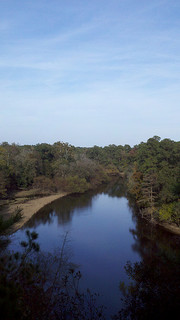
Coree Indians, when first encountered by Europeans arriving in what is now North Carolina, were living south of the Neuse River along the Atlantic Coast. Like other Indians of the Coastal Plain, the Coree (or Core) lived in villages, reportedly three in number, and depended for their livelihood on both agriculture and the ocean. Sharply reduced in numbers by epidemic disease and warfare, they totaled perhaps 100 persons by 1701. Scholars debate whether the Coree spoke an Algonquian or an Iroquoian language. They seem to have been closely associated with the nearby Tuscarora, who spoke an Iroquoian language. At any rate, the Coree allied with the Tuscarora during the Tuscarora War of 1711-13 and were nearly obliterated. Presumably some Coree survivors joined the Tuscarora after the war and may have moved north to the Iroquois country in New York with them. Most, however, joined together with the remnants of other coastal tribes and settled on a reservation at Lake Mattamuskeet. Core Banks and Core Sound on the North Carolina coast were both named for the Coree Indians.